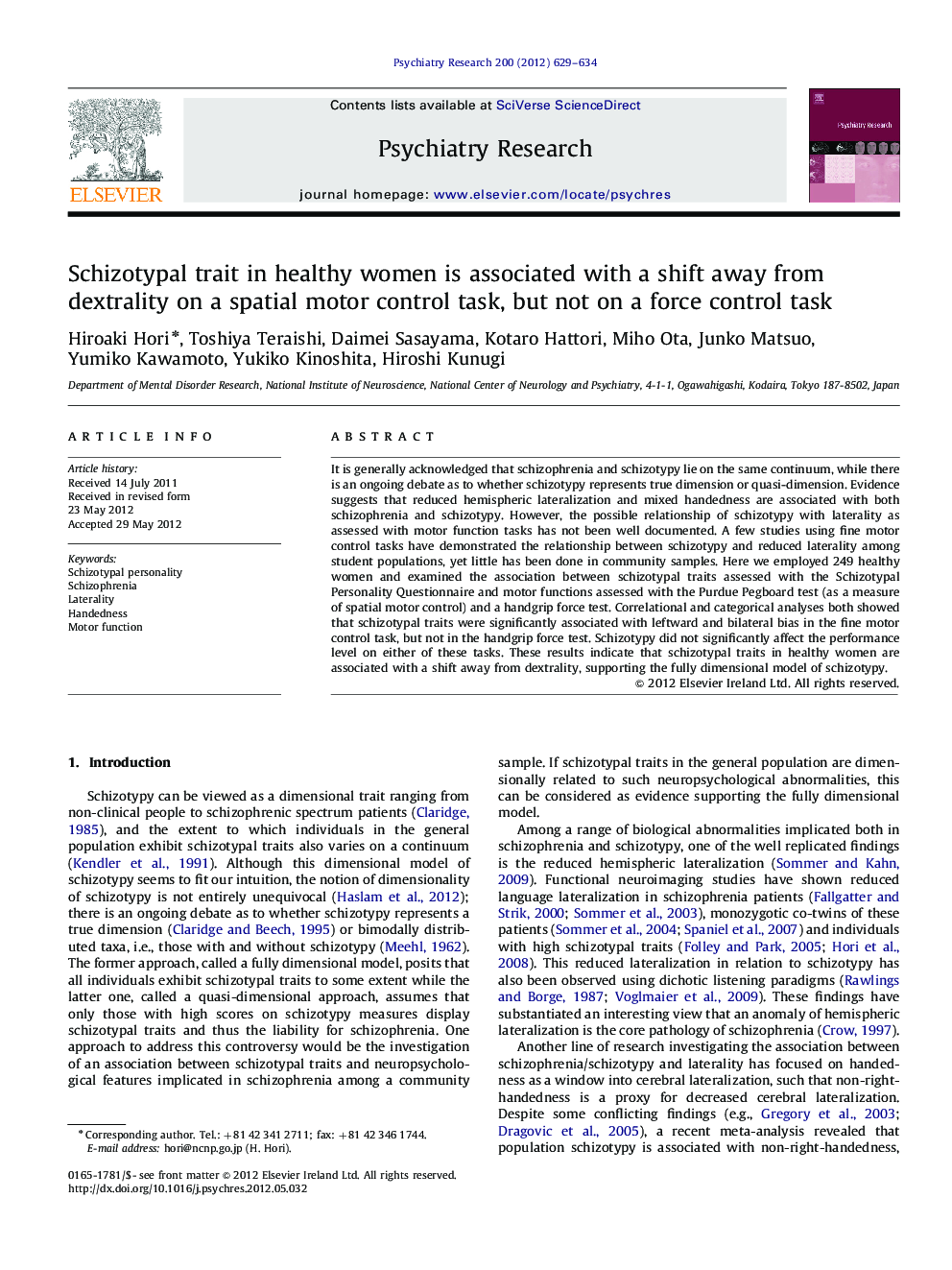| Article ID | Journal | Published Year | Pages | File Type |
|---|---|---|---|---|
| 6816126 | Psychiatry Research | 2012 | 6 Pages |
Abstract
It is generally acknowledged that schizophrenia and schizotypy lie on the same continuum, while there is an ongoing debate as to whether schizotypy represents true dimension or quasi-dimension. Evidence suggests that reduced hemispheric lateralization and mixed handedness are associated with both schizophrenia and schizotypy. However, the possible relationship of schizotypy with laterality as assessed with motor function tasks has not been well documented. A few studies using fine motor control tasks have demonstrated the relationship between schizotypy and reduced laterality among student populations, yet little has been done in community samples. Here we employed 249 healthy women and examined the association between schizotypal traits assessed with the Schizotypal Personality Questionnaire and motor functions assessed with the Purdue Pegboard test (as a measure of spatial motor control) and a handgrip force test. Correlational and categorical analyses both showed that schizotypal traits were significantly associated with leftward and bilateral bias in the fine motor control task, but not in the handgrip force test. Schizotypy did not significantly affect the performance level on either of these tasks. These results indicate that schizotypal traits in healthy women are associated with a shift away from dextrality, supporting the fully dimensional model of schizotypy.
Related Topics
Life Sciences
Neuroscience
Biological Psychiatry
Authors
Hiroaki Hori, Toshiya Teraishi, Daimei Sasayama, Kotaro Hattori, Miho Ota, Junko Matsuo, Yumiko Kawamoto, Yukiko Kinoshita, Hiroshi Kunugi,
